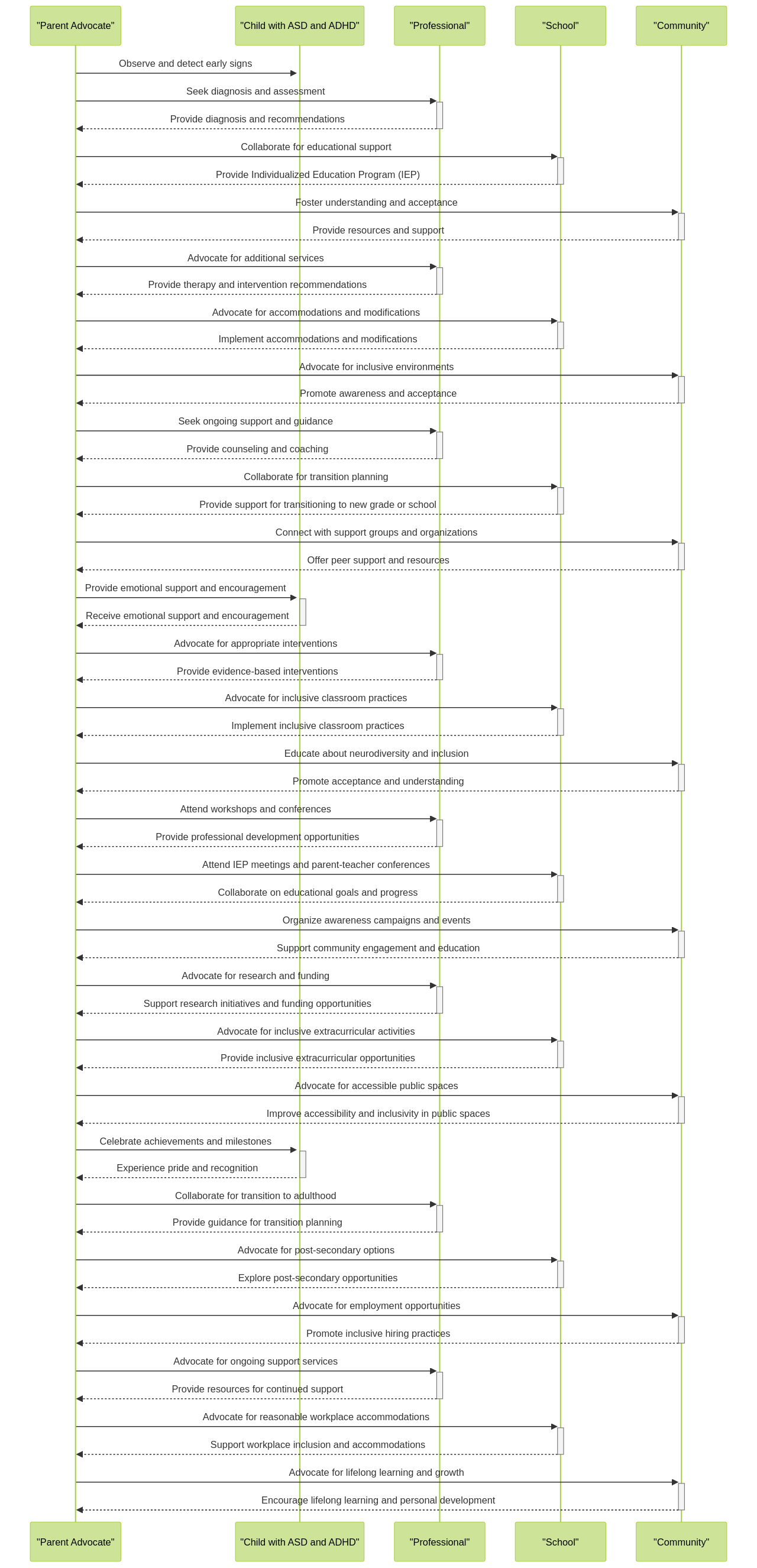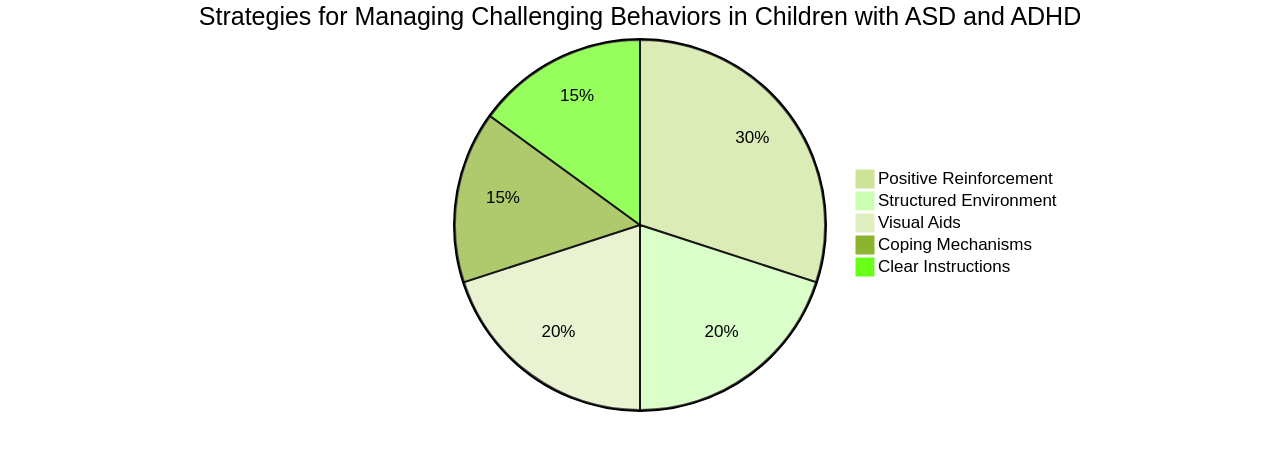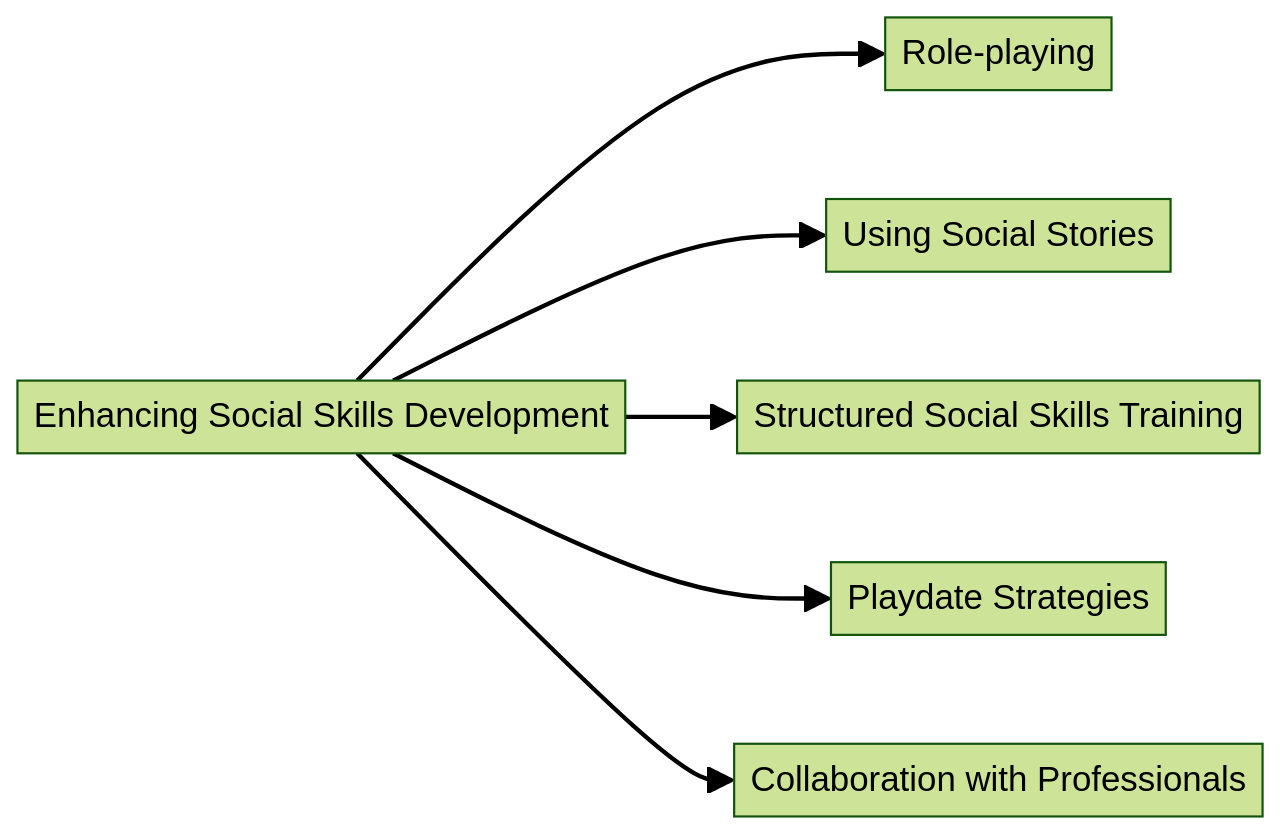Introduction
Understanding Autism Spectrum Disorder (ASD) and Attention-Deficit/Hyperactivity Disorder (ADHD) is crucial for parents and caregivers. These neurodevelopmental disorders significantly impact a child's social skills, behaviors, and learning capabilities. ASD is characterized by issues in social engagement, communication difficulties, and repetitive behaviors. ADHD, on the other hand, involves patterns of inattention, impulsivity, and hyperactivity.
In this article, we will delve into the complexities of ASD and ADHD, exploring their unique characteristics and challenges. We will discuss the importance of early detection, diagnosis, and the role of parent advocates in supporting children with these conditions. Additionally, we will provide practical strategies for managing challenging behaviors, enhancing social skills development, and accessing support services. By gaining a deeper understanding of ASD and ADHD, parents can navigate their child's journey with confidence and create a supportive environment for their growth and development
1. Understanding Autism Spectrum Disorder and ADHD: A Primer for Parents
ASD and ADHD are both neurodevelopmental disorders that significantly influence a child's social skills, behaviors, and learning capabilities. ASD often manifests as issues in social engagement and communication, combined with repetitive behaviors and specific interests. ADHD, on the other hand, is characterized by persistent patterns of inattention, impulsivity, and hyperactivity.
ADHD symptoms, however, are not uniform and may vary in type and severity. This variation can make diagnosing ADHD a complex process as typical behaviors could potentially be mistaken for ADHD symptoms. A diagnosis requires that these symptoms interfere with a person's daily functioning, including at school, work, or home. The spectrum of symptoms is a crucial factor in professionals determining the most efficient approach to assist an individual with ADHD.
In a similar vein, Autism Spectrum Disorders are developmental brain disorders that primarily impact social interaction and communication. Autism affects about one in 66 children, a prevalence higher than many realize. Symptoms often include difficulties with social interaction, both verbal and nonverbal communication, and repetitive behaviors or interests. A characteristic often observed in children with autism is a need for routine, where even minor changes can cause distress. The cause of autism remains unknown, and it affects tens of millions of people around the globe.
Understanding the impact of Autism Spectrum Disorder (ASD) on a child's behavior is crucial for parents and caregivers. ASD can manifest in various ways, such as difficulty with social cues, repetitive behaviors, and sensory sensitivities. It's important to remember that each child with ASD is unique, and the impact of the disorder on their behavior may vary. Gaining a deeper understanding of ASD allows parents and caregivers to provide appropriate support and interventions, assisting in managing and improving the child's behavior.

Remember, each child is unique, and their experiences with ASD and ADHD can widely differ. Understanding these conditions is the initial step towards effectively supporting children who are diagnosed with them
2. Role of Parent Advocates in Supporting Children with ASD and ADHD
The role of parent advocates in the journey of children with ASD and ADHD is paramount. They often act as the initial safety net, detecting early signs of these conditions in their children, and setting in motion the steps for diagnosis and treatment. Their unceasing endeavors ensure their children receive the essential support and adjustments in educational settings and beyond.

Parent advocates are instrumental in helping their children navigate and comprehend complex social situations, as well as manage challenging behaviors. Their influence, however, isn't limited to the home or school environment. They routinely become catalysts for change within their communities, fostering a broader understanding and acceptance of children diagnosed with ASD and ADHD. Their commitment and advocacy are key to cultivating a society that is more inclusive and understanding.
The strategies for parent advocates aiming to unlock the potential of children with ASD and ADHD include a mix of specific interventions, support systems, and efficient communication approaches. It's crucial for parents to collaborate with professionals, educators, and healthcare providers to devise bespoke plans addressing the distinct needs and challenges of their children. Establishing a robust support network, keeping abreast of the latest research and therapies, and advocating for appropriate services and accommodations are critical steps towards enabling children with ASD and ADHD to flourish and succeed
3. Strategies for Managing Challenging Behaviors in Children with ASD and ADHD
Dealing with challenging behaviors in children with ASD and ADHD can seem daunting, but when equipped with the right strategies, it can become manageable. A potent strategy at your disposal is the application of positive reinforcement. This approach promotes the recognition and reward of good behavior to encourage its repetition, backed by the use of rewards or incentives to reinforce desirable behaviors.

Creating a structured environment, characterized by predictability, can serve as a source of solace for children. This can be achieved with visual schedules, clear rules, and routines that remain consistent, to instill a sense of security and predictability, which helps to alleviate anxiety and promote better behavior.
Furthermore, equipping children with coping mechanisms can enable them to manage their emotions and responses in a variety of situations. These strategies can include techniques such as deep breathing exercises, mindfulness activities, social stories, and visual schedules. The use of specific praise can enhance positive behaviors. In challenging situations such as grocery shopping or car rides, setting clear expectations, offering choices, and involving children in the process can relieve stress and promote good behavior.
Incorporating visual aids like timers or pictures can make transitions between activities smoother. Using music, games, or favorite toys can also motivate children during transitions, rendering the process more enjoyable and less intimidating. Remember, consistency, clear instructions, and positive affirmations are crucial when providing directions. With a little planning and patience, you can transform everyday tasks into enjoyable learning experiences for children while encouraging positive behavior
4. Navigating Support Services: A Guide for Parents of Children with ASD and ADHD
Setting out to identify and utilize support services for children with ASD and ADHD can feel like an overwhelming task. However, the secret is to comprehend the wealth of options available and how to employ them to accommodate your child's distinct needs. Services range from specialized educational programs to speech and language therapy, occupational therapy, and social skills training. Moreover, psychologists or psychiatrists can prove invaluable in addressing the mental health challenges that may accompany these conditions.
A noteworthy organization, Undivided, has been crucial in providing resources and support for families raising children with disabilities. They offer information on a myriad of topics, such as education, insurance, public benefits, mental health, and future planning. Undivided's unique 'decoders' assist parents in understanding complex topics like IEPs, insurance, new diagnoses, and more. They also share articles on common therapies, support organizations, and future changes to programs.
In the educational sphere, it is imperative to advocate for your child's needs. Being aware of your child's rights under Section 504 and the Individuals with Disabilities Education Act (IDEA) can empower you to advocate effectively. Requesting an evaluation from the school can start a formal process leading to accommodations and support services. Active participation in meetings with the Individualized Education Program (IEP) team is essential.
Undivided also provides a support system with dedicated navigators who have experience in supporting families with disabilities. Regular communication with teachers and updating the plan as needed is crucial. Advocates can assist parents in understanding available services and ensuring the school is meeting the child's needs. Additional resources, such as NAMI Basics and the NAMI Helpline, are also available to support parents and caregivers.
Remember, the journey might be demanding, but with the correct support and resources, you are not alone. Furthermore, ASD Media is a valuable resource for parents seeking support services for children with ASD and ADHD. The website features news articles that provide information and resources to empower these children to thrive and succeed. Speech and language therapy is beneficial in enhancing communication skills and addressing challenges related to pragmatics. Social skills training is another essential service that teaches social cues and appropriate behaviors, using visual supports, structured programs, and interventions tailored to each child's needs. Lastly, creating an individualized plan for children with ASD and ADHD, involving a multidisciplinary team, can be highly beneficial in managing symptoms and promoting development
5. Enhancing Social Skills Development in Children with ASD and ADHD: Practical Tips
Children diagnosed with Autism Spectrum Disorder (ASD) and Attention-Deficit/Hyperactivity Disorder (ADHD) may find social engagement daunting. Yet, with regular practice and custom-made strategies, they can make significant progress. It is essential for parents to cultivate an environment that motivates their children to interact socially, thereby nurturing the growth of their social skills.

Role-playing is a beneficial strategy for such instances, acting as an effective method for imparting social skills. It provides a secure and managed setting where children can practice and understand various social scenarios.
Additionally, the use of social stories has proven to be a successful strategy. These brief narratives about a particular situation, event, or activity, clarify what to expect and why. These stories are crafted to assist children in better comprehending social norms and expectations.
Structured social skills training programs and individualized support can be a boon for children with executive function weaknesses, a common characteristic of ADHD. Parents can aid their children by pinpointing the root cause of their social issues and practicing solutions.
Another strategy includes assigning focused behavior missions during playdates to enhance their social skills. Identifying compatible friends with similar temperaments can enrich the child's play experience and provide opportunities for practicing target behaviors.
Parents can also plan playdates in advance, manage the activities and environments, and establish subtle cues to create a supportive environment conducive for skill-building. The duration of playdates should be reasonable to prevent overstimulation and fatigue.
Collaboration with parents, teachers, and therapists can lead to a consistent approach that reinforces social skill development across different settings. Organizations like the ADD Coach Academy (ADDCA) and Brain Balance Achievement Centers offer training programs, assessments, and resources for children with ADHD and ASD, assisting their social skills development further
6. Balancing Parental Responsibilities while Advocating for a Child with ASD or ADHD
For parents of children with ASD or ADHD, the role is not just essential but often feels like a delicate balancing act. It's critical to ensure the child's needs are met while also prioritizing one's wellbeing. Parenting a child with Pathological Demand Avoidance (PDA), a specific autism profile, can present unique challenges due to its distinctive characteristics, which can sometimes lead to misunderstanding or misdiagnosis.
One beneficial strategy in these circumstances is low demand parenting. This approach centers on reducing stress and anxiety levels in children with PDA. It involves tailoring the environment and activities to the child's needs, letting the child take the lead, and lessening the perception of demands. It's crucial to distinguish this approach from permissive parenting as it continues to uphold suitable boundaries and expectations.
Maintaining a balance between parental support and fostering independence is key. It's vital to intervene and advocate for your child at crucial moments while also promoting their development of self-advocacy, responsibility, and autonomy. This balance may be intricate, but can lead to substantial benefits regarding your child's development and self-assurance.
Remember, seeking help and taking breaks when necessary is perfectly acceptable. Advocacy is a long-term commitment, not a race, and self-care is vital for the journey ahead. Several resources are available, such as the PDA Society, Amanda Diekman's "Low Demand Parenting," and Dr. Donna Henderson's master class. These resources can provide further understanding and support.
Equally important is to consider self-care strategies, such as seeking support from other parents or support groups, practicing stress-reducing activities like meditation or exercise, setting aside time for personal interests, and ensuring sufficient rest and relaxation. Professional advice and guidance from healthcare professionals or therapists specialized in ASD or ADHD can be invaluable.
Exploring reliable sources such as reputable websites, books, or support groups that offer guidance for parents in similar situations can be helpful. These resources often provide practical strategies on managing multiple responsibilities while ensuring your child gets the necessary support. Consulting with professionals, therapists, educators, or doctors, who have expertise in working with children with ASD or ADHD, can provide personalized guidance.
Accessing resources that provide guidance on navigating autism support services can empower parents on their journey, offering valuable insights and techniques for managing the unique needs and behaviors associated with ASD or ADHD. This access to supports can equip parents with the knowledge and tools necessary to effectively handle the challenges and create a positive environment for their child's development
7. Building a Supportive Community: How to Connect with Other Parent Advocates
Creating an inclusive community is a vital lifeline for those parenting children with ASD and ADHD. Uniting with other parent advocates, individuals who are on similar journeys, can provide emotional reinforcement, practical insights, and a sense of belonging. These bonds can be formed in a variety of environments, from local support assemblies to digital forums and social media circles.
Consider Steptalk.org, a platform that has been actively supporting step-parents since 2005. This space allows parents to express their challenges, seek advice, or vent about their experiences. Positive testimonials highlight the comfort and sense of community this platform provides.
Another example is the "Parents Who Walk Away" forum. This is a refuge for parents of estranged adult children contemplating or deciding to distance themselves due to disrespectful behavior. The forum offers a platform for candid discussions, sharing tough decisions, and exchanging ideas freely. The camaraderie and wisdom found in these groups are a testament to their strength and resilience.
Connecting with other parent advocates can offer emotional support and a sense of solidarity. It provides a platform for exchanging information, resources, and strategies, empowering parents in their journey of navigating autism support services.
Moreover, building a supportive community for children with ASD and ADHD can be beneficial for both the children and their parents. This can be achieved by seeking local support groups, joining online communities, attending workshops and conferences, engaging with schools and professionals, and fostering friendships and playdates for your child.
Each step towards fostering such a supportive community can have a profound impact on the lives of parents and children with ASD and ADHD. The effort invested in building this network of support will pay dividends in the form of a strong, supportive community
Conclusion
In conclusion, understanding Autism Spectrum Disorder (ASD) and Attention-Deficit/Hyperactivity Disorder (ADHD) is crucial for parents and caregivers. These neurodevelopmental disorders significantly impact a child's social skills, behaviors, and learning capabilities. ASD is characterized by issues in social engagement, communication difficulties, and repetitive behaviors, while ADHD involves patterns of inattention, impulsivity, and hyperactivity. Gaining a deeper understanding of ASD and ADHD allows parents to provide appropriate support and interventions to help manage and improve their child's behavior.
The main points discussed in this article highlight the importance of early detection, diagnosis, the role of parent advocates in supporting children with ASD and ADHD, strategies for managing challenging behaviors, enhancing social skills development, and accessing support services. By recognizing the unique characteristics and challenges of these disorders, parents can navigate their child's journey with confidence and create a supportive environment for their growth and development. It is essential for parents to collaborate with professionals, educators, and healthcare providers to devise customized plans addressing the distinct needs and challenges of their children. Additionally, connecting with other parent advocates can provide emotional reinforcement, practical insights, and a sense of belonging.
To start now in gaining a deeper understanding of ASD and ADHD or connecting with other parent advocates for support, visit ASD Media




